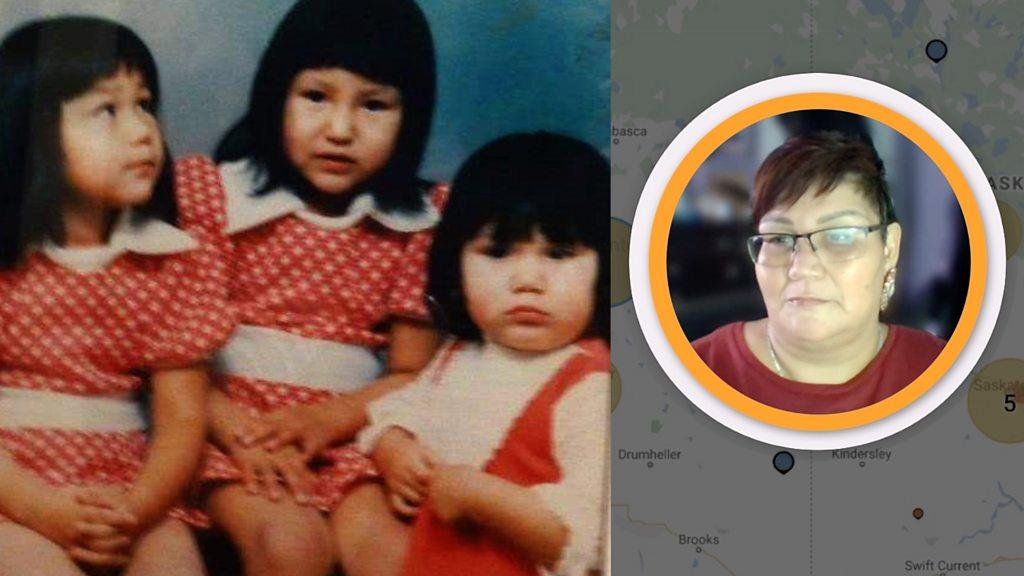Egerton Ryerson statue toppled at Canada indigenous school protest
- Published
Egerton Ryerson helped create a Canadian school system which forcibly assimilated indigenous people
A statue has been toppled at Ryerson University in Toronto at a protest over the recent discovery of unmarked graves of indigenous children at a school.
Egerton Ryerson is deemed one of the architects of Canada's controversial residential school system.
His statue had already been vandalised earlier in the week after the suspected remains of 215 children were found.
Growing scrutiny of Ryerson has led to calls to change the university name and remove the statue.
It had already been daubed in red paint with slogans like "dig them up" and "land back" painted on the plinth in reference to his links to Canada's treatment of indigenous people.
Social media videos from the protest on Sunday showed the statue being pulled down off its pedestal as a crowd cheered nearby.
A statement from the university later said more than 1,000 people had taken part in a peaceful protest on Sunday afternoon before a truck arrived about an hour later to help bring the statue down.
Mohamed Lachemi, the university's president, said the statue would not be restored or replaced following the toppling.
It was already one of the issues being considered by a special task force, set to conclude by September, which is determining how the institution can respond to its namesake's legacy, including a possible rebranding.
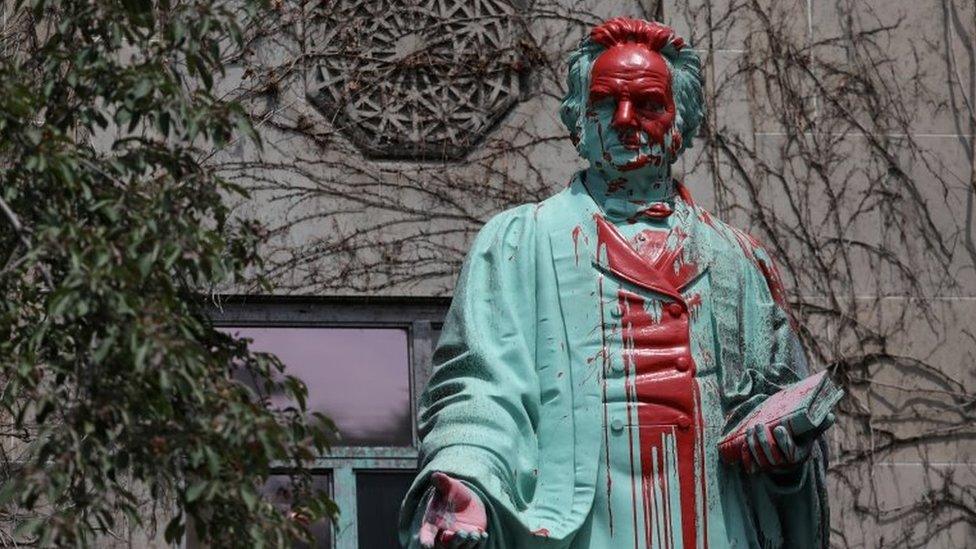
The statue was already defaced earlier this week
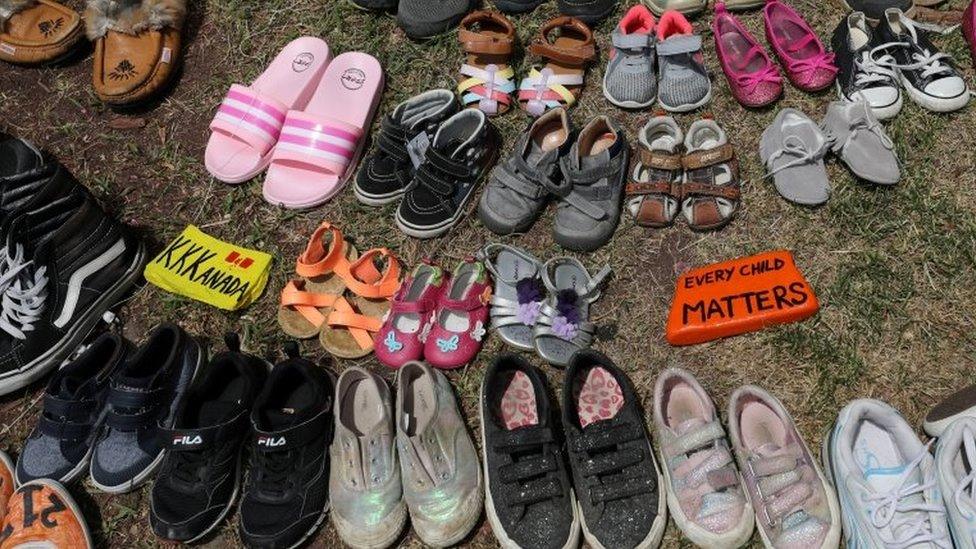
Children's shoes had also been left by the statue as a symbol of the grave's discovery
Local media report that Toronto police are investigating the incident.
Ryerson was a prominent figure in the creation of the public education system in Ontario during the 1800s but his role in preparing the ground for separate schools with forced indigenous assimilation has led to growing calls in recent years to reassess his legacy.
Students and indigenous faculty members were among those who renewed calls to change the university's branding to "X University" following the discovery of the unmarked graves at the Kamloops Indian Residential School.
Kamloops was the biggest of Canada's compulsory boarding schools run by the government and religious authorities during the 19th and 20th Centuries with the aim of forcibly assimilating indigenous youth.
University officials have previously acknowledged Ryerson's role in shaping the residential school system and its impact on the indigenous community by adding a plaque to the statue.
The issue of how historical figures with links to colonialism and racism are commemorated, including with statues, has become a contested issue round the world.
"No reconciliation without truth": A survivor recounts abuse in Canadian residential school
Related topics
- Published15 July 2021
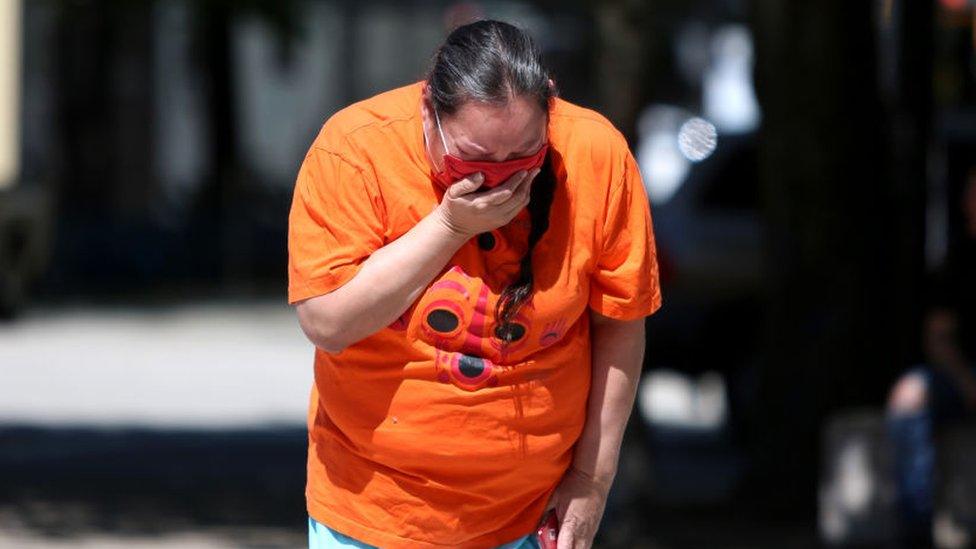
- Published13 June 2015
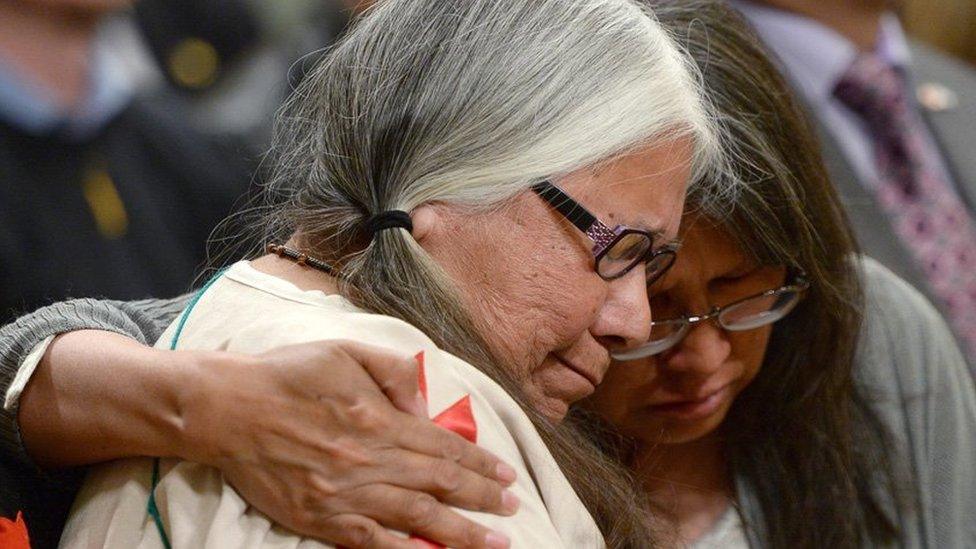
- Published10 February 2019
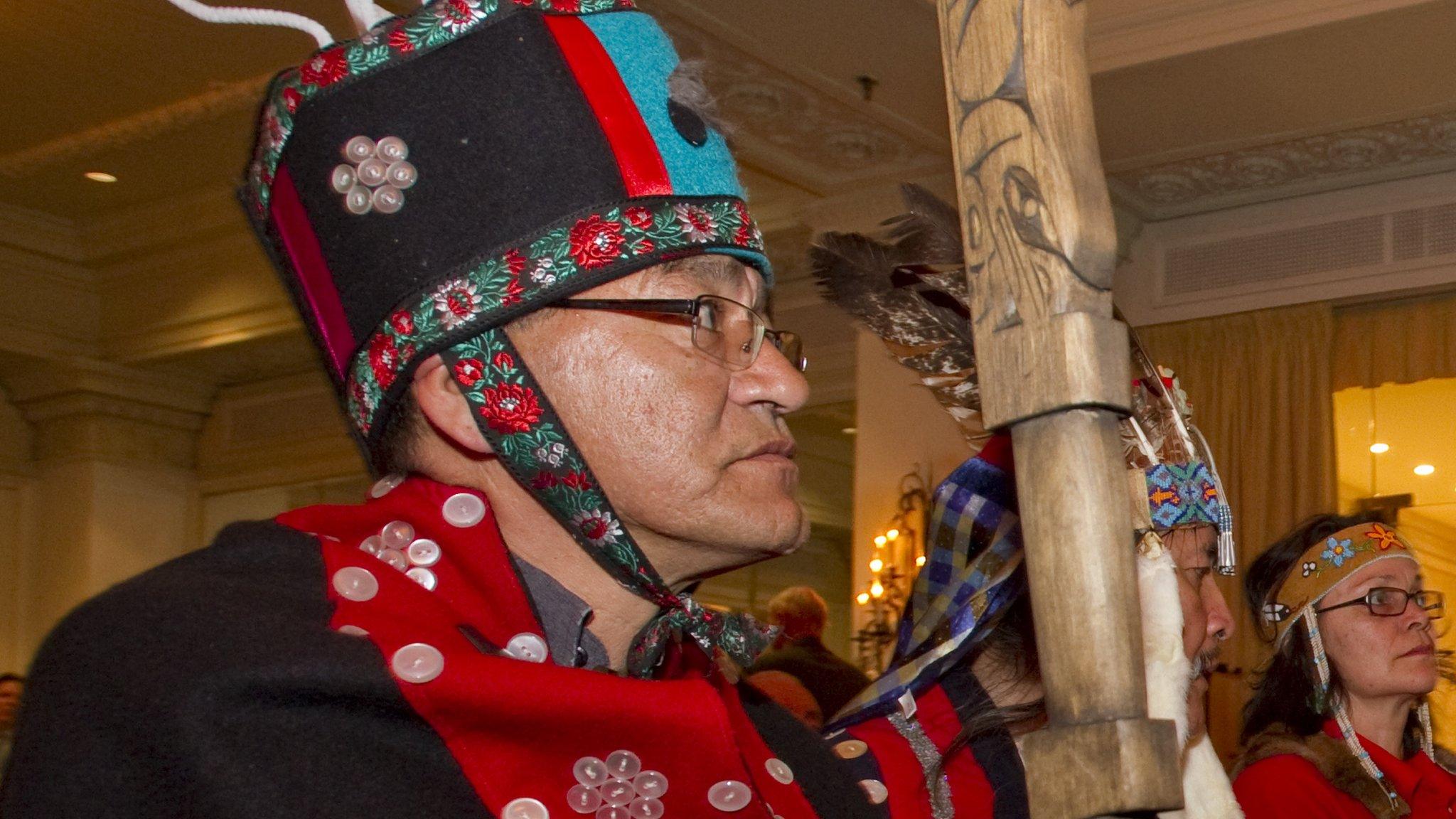
- Published14 December 2020
